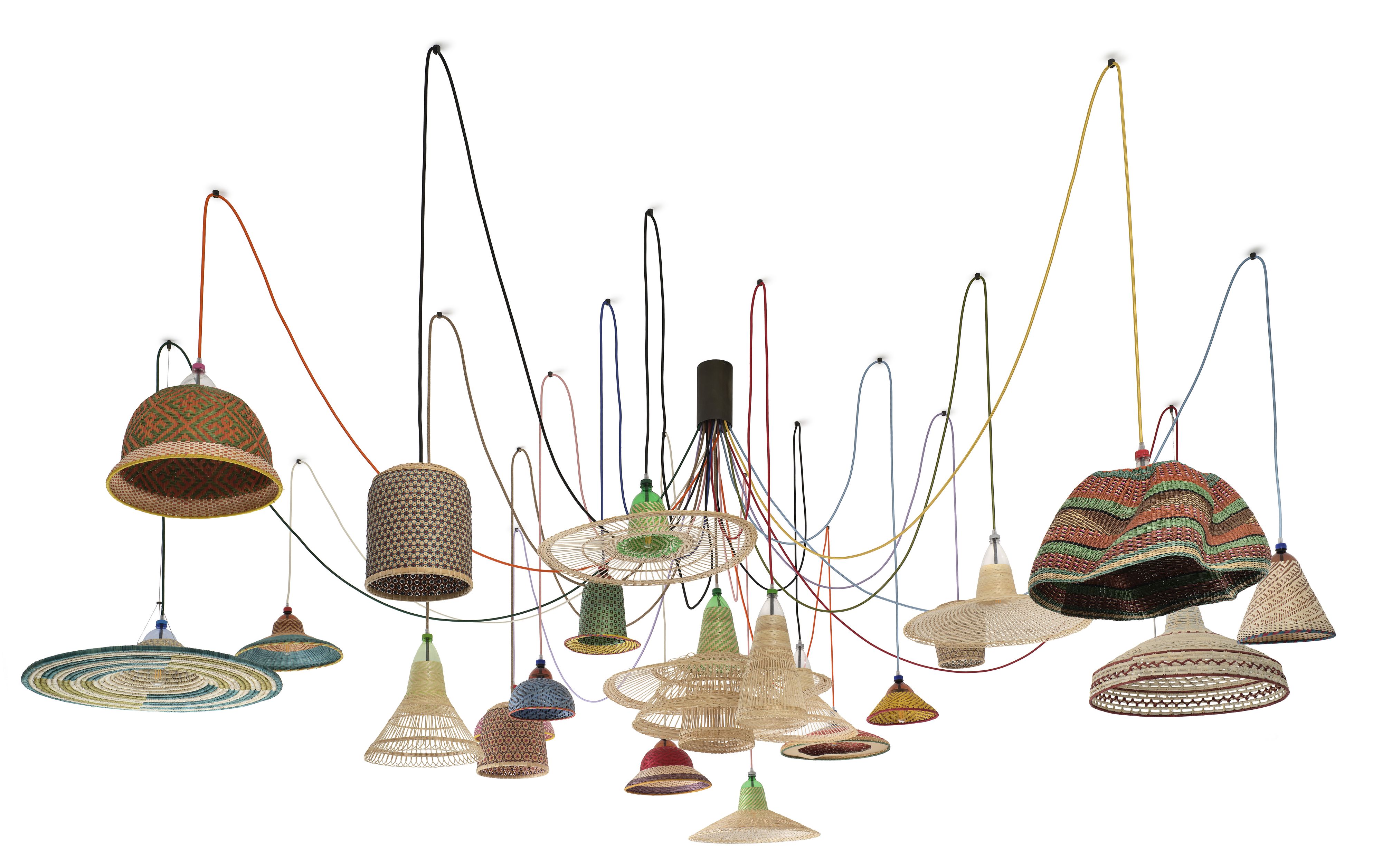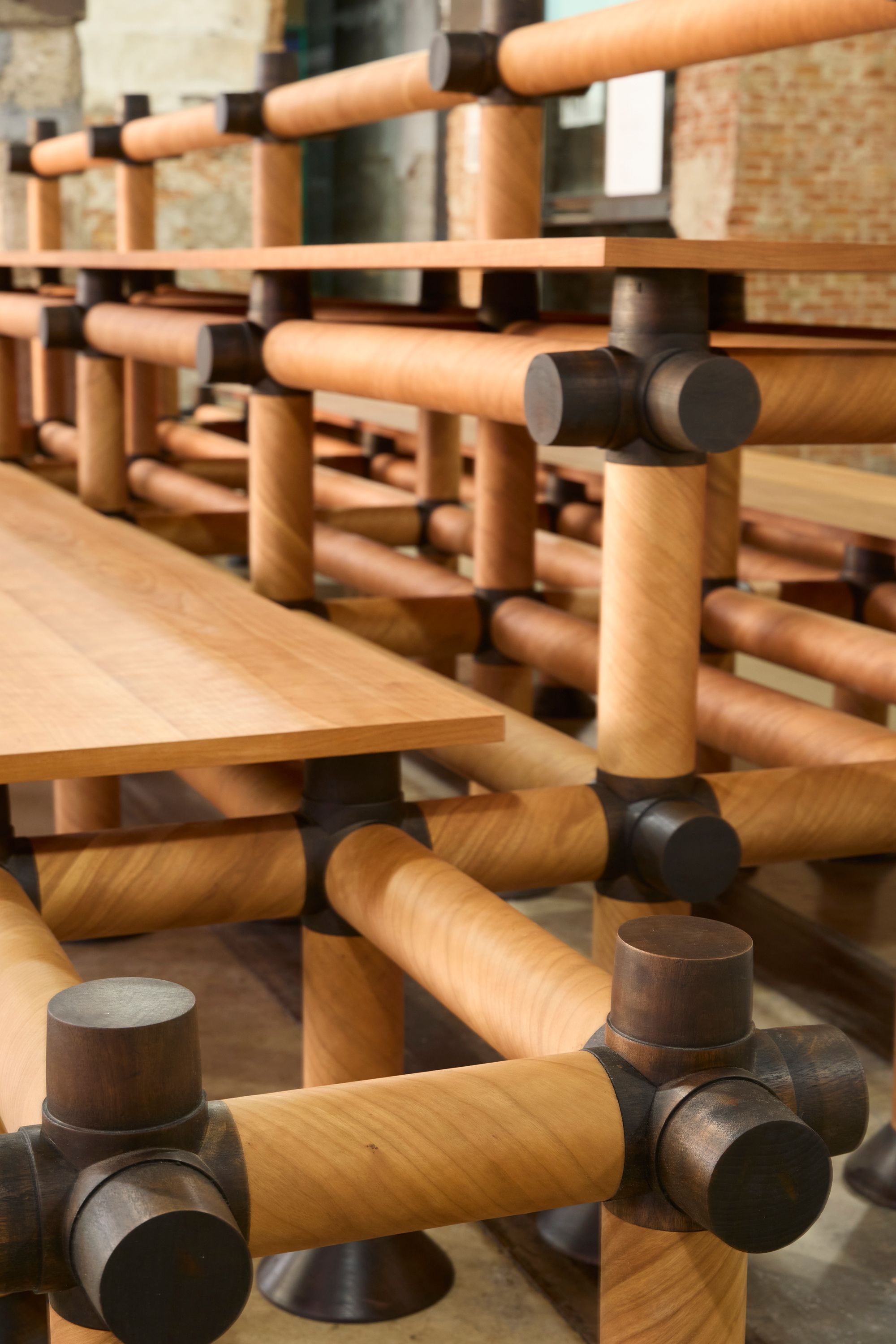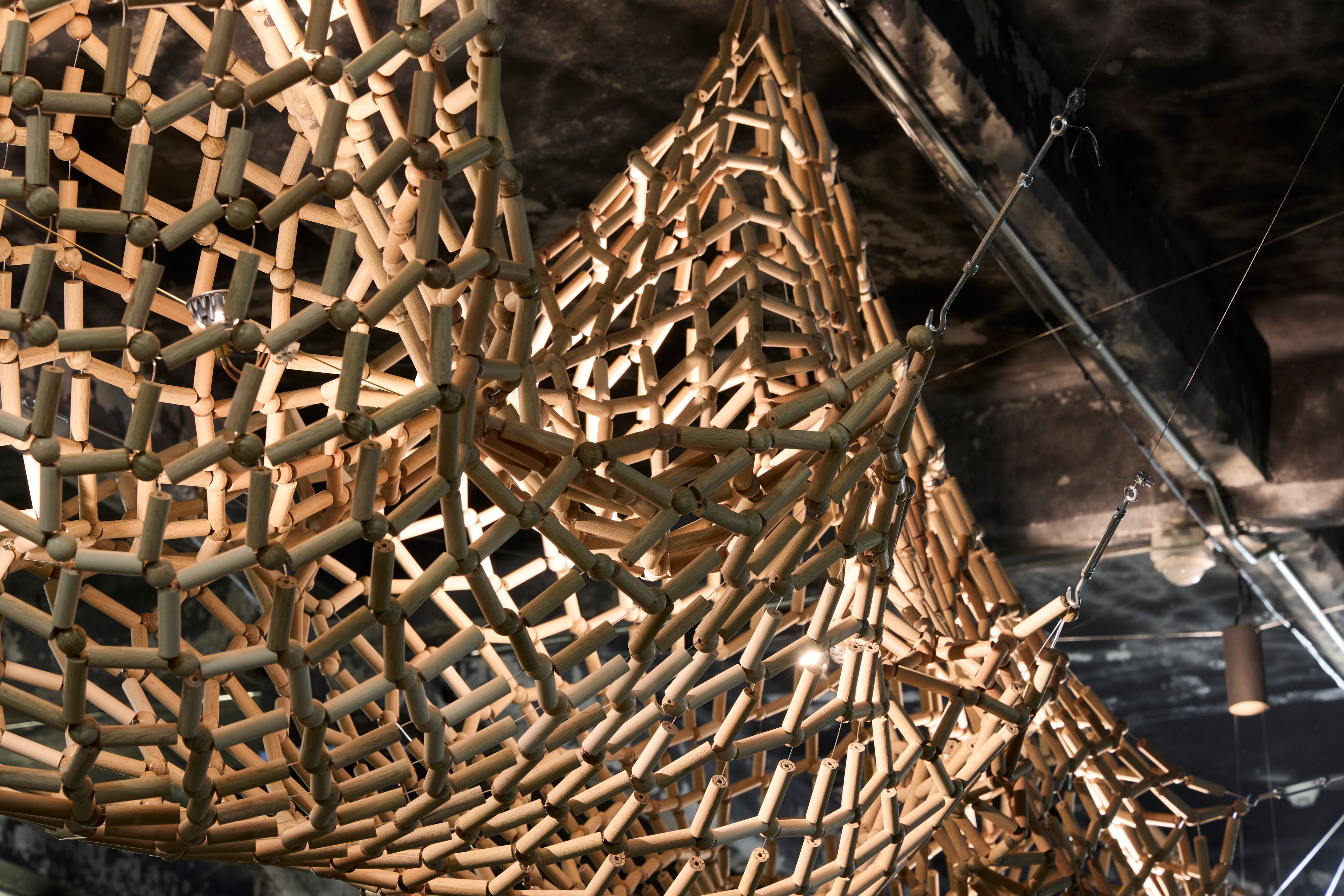
Imagen de la exposición 3 Ceramistas en el Ateneo de Madrid (1957). Cerámica de Jacqueline Canivet, José Luis Sánchez y Arcadio Blasco.

Álvaro Catalán de Ocón, PET Lamps.
It was design time again this past February in the Spanish capital, when the Madrid Design Festival (MDF) opened for its sixth edition. Though the format remained essentially the same, this year marked a big change: where, at its beginnings, the MDF mostly brought foreign design to a Spanish audience, the 2023 talent was all home-grown, with a mixture of the young, the more established, and the historic. There was also an emphasis on craft production, both for its intrinsic beauty and as a way of exploring how design practice might evolve in our post-pandemic Anthropocene.
The young were given their chance to shine, alongside more established designers, in Mother Nature, which explored the slow, the recycled, and the artisanal. Stand-out exhibits included Miguel Leiro’s Picudo Throne, an armchair made from palm-tree trunk — an increasingly available resource as more and more trees in Spain fall victim to the palm beetle (picudo rojo), which arrived in ships from Egypt and the Maghreb in the early 2000s — and Ana Illueca’s Circular Surprise, a series of plates and bowls made from the clay sludge collected when she washes her potter’s tools. As well as aiming for zero waste, Illueca’s process adds a daredevil dash of Surrealist chance, since the uncontrolled mix of clays produces highly unpredictable — and poetic — results.

Amarist, Fossil Lake Metamorphosis. Photo by Uxio da Vila.
Over at Madrid’s Matadero, two designers now arriving at mid-career were given the spotlight. Launched ten years ago, Álvaro Catalán de Ocón’s PET Lamps, which combine traditional handicraft with recycled plastic bottles, have made him famous — to celebrate their success (the revenues generated by the project keep his studio afloat and allow him to take on loss-making experimental projects), he put on a show paying homage to the artisans he works with, in countries such as Australia, Colombia, Ethiopia, Ghana, and Thailand. Meanwhile Jorge Penadés, who was recently hired by Camper as design manager for their 300 stores worldwide, experimented with an innovative technique based on cardboard toilet-roll tubes. Transposing the principle into timber, Penadés produced extremely light but resistant tubes using 0.7 mm-thick cherry-wood veneer — for the skeptical press, he took great delight in demonstrating their strength by jumping up and down on the bleacher-seat construction he had built to show what you might do with this promising new method.

Imagen de la exposición 3 Ceramistas en el Ateneo de Madrid (1957). Cerámica de Jacqueline Canivet, José Luis Sánchez y Arcadio Blasco.

Jorge Penadés, Wrap. Photo by Uxio da Vila.
Over at the Palacio Santa Bárbara, contemporary Spanish craft knowhow was showcased at the beautifully displayed Rasgos Intangibles, while this year’s historical find was the exhibition Madrid, Alfar de Modernidad. Covering the period 1955–68, it explored the moment when the dictatorship loosened its grip on architecture and design, allowing Spanish Modernism to crystallize. As the show demonstrates, craft and the decorative arts played a big part in that process, culminating in Spain’s now-forgotten pavilion at the 1964 World’s Fair in New York. Not surprisingly perhaps, given the country’s history in the field, ceramics took on the most convincing role in this process, and Alfar de Modernidad brings together some stunning pieces from the era, alongside cutlery, furniture, and lighting. Then as now, the design we need can only thrive if given the conditions to develop, which brings home the importance of events like the MDF in raising both public and institutional awareness.

Álvaro Catalán de Ocón, Nube. Photo by Uxio da Vila.